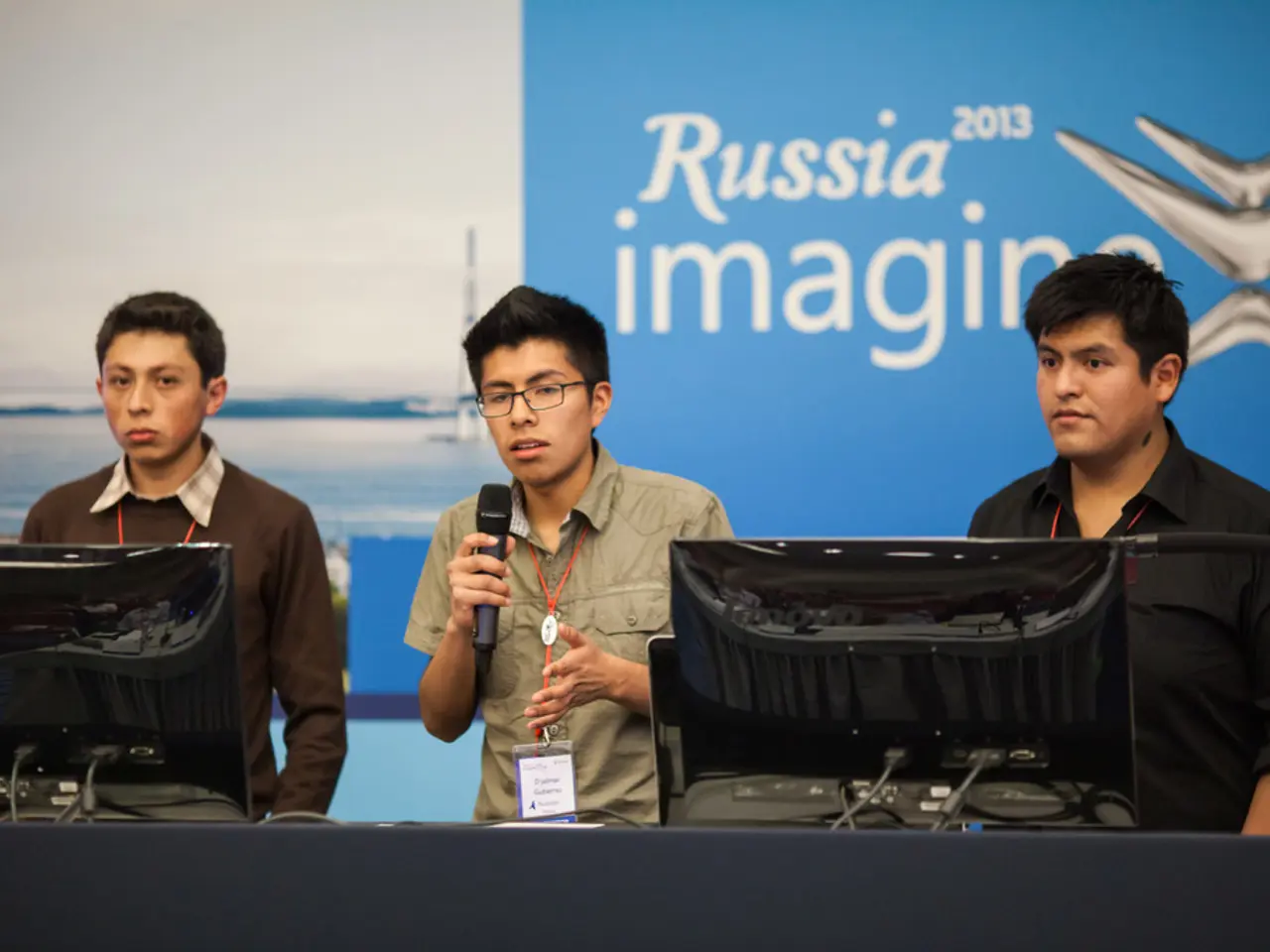Competitive AI Yields as New Startup Focuses on Sharing and Manipulating Brain Data
In the realm of cutting-edge technology, Neuralink's neural lace technology is making significant strides. As a privately-funded medical research firm, founded by Elon Musk, Neuralink is based in California and registered in Delaware. The company's groundbreaking innovation is designed to wirelessly connect the human brain to a computer, with the ultimate goal of bringing human brain capacity to the same level as advanced artificial intelligence.
As of mid-2025, the neural lace technology is undergoing human clinical trials. The initial implants have been successfully placed in several volunteers, primarily individuals with paralysis. This technology enables direct brain-computer interaction, allowing users to control cursors, operate smartphones and TVs, and even play video games using thought alone.
The first human trial was approved by the FDA in May 2023. Noland Arbaugh, a quadriplegic, was the first volunteer to be implanted in January 2024. Although significant technical challenges arose, such as the retraction of up to 85% of implanted threads into the brain, reducing device performance, subsequent implants in other participants addressed these issues with improved thread placement and software updates, achieving more stable performance and advanced control capabilities, including 3D design and higher-level gaming.
Beyond aiding mobility in paralyzed individuals, Neuralink is pursuing projects like "Blindsight," which aims to restore vision by electrically stimulating the visual cortex to bypass damaged optic nerves. This project received FDA Breakthrough Device designation in September 2024.
Elon Musk's broader vision for neural lace involves achieving a symbiosis between human brains and artificial intelligence (AI), effectively enhancing human cognitive capacity by seamless brain-machine interfacing. This aligns with his concerns about AI risks, as neural lace could enable humans to connect directly to AI systems, potentially mitigating threats posed by superintelligent AI but also raising ethical and security concerns such as brain hacking.
The neural lace concept originated from 80's science fiction novels as a brain-computer interface. As the technology continues to evolve, it promises to revolutionise the way we interact with technology and potentially redefine human abilities. However, the technology still faces significant technical hurdles, and its ultimate impact will depend on overcoming these challenges, regulatory approvals, and societal acceptance. The vision remains ambitious: long-term brain-AI integration to expand human capacities.
As the field of neuroscience continues to advance, it will be fascinating to see how Neuralink's neural lace technology develops and the impact it will have on society.
- In the pursuit of human-AI symbiosis, Elon Musk's Neuralink is also researching projects like "Blindsight," which seeks to restore vision by electrically stimulating the visual cortex, bypassing damaged optic nerves.
- Aside from its potential to aid those with paralysis, Neuralink's neural lace technology could also revolutionize the healthcare and wellness sector, particularly in relation to treating neurological disorders.
- The advancement of Neuralink's technology has brought it into the realm of business, with venture capitalists contributing to its growth, and the company's innovation posing implications for the future of technology and artificial intelligence.
- At the same time, the development and widespread adoption of neural lace technology may raise ethical questions related to privacy, security, and the potential for brain hacking, necessitating careful consideration and regulation in the realm of science and finance.




